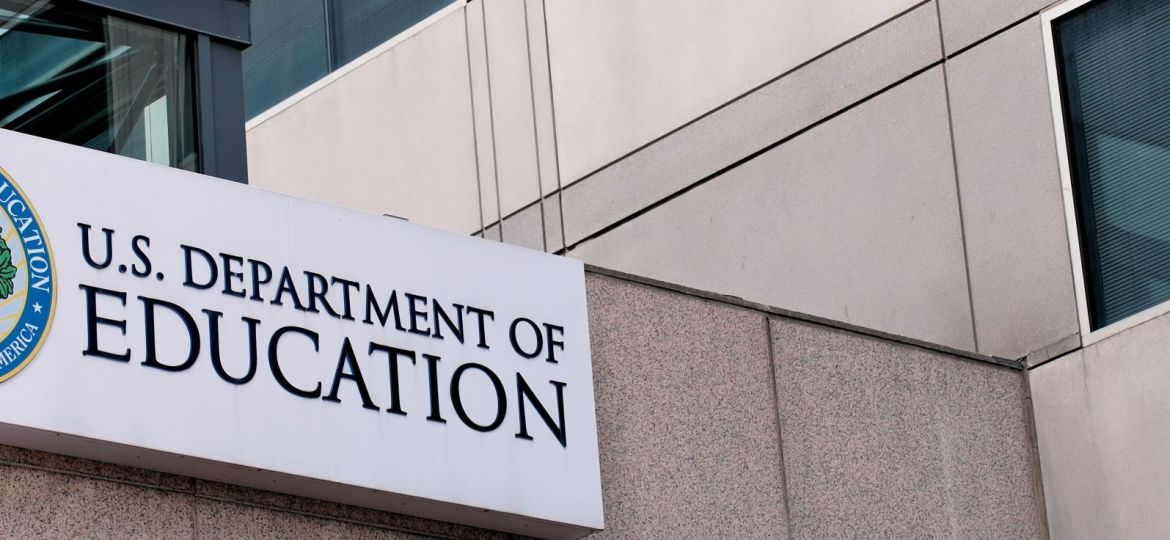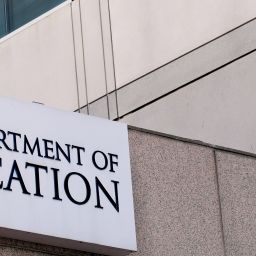

Dr. Frank Boyd
Frank was Provost and Academic Dean at Guilford College from 2017-2020 after serving as a faculty member and academic administrator at Illinois Wesleyan University (IWU). While there, he served in a variety of administrative positions including Department Chair, Director of General Education, Associate Dean, Associate Provost and Interim Provost.
The Path to Eliminating an Agency
Almost nobody was surprised that candidate Trump had plans for the Department of Education (DoEd) in his second term, especially since Project 2025 detailed the proposed reforms with some specificity. Most observers expected President Trump to renew the approach from his first term when he proposed eliminating the agency, but the scope of his reforms and the mode of his approach have been demonstrably different. President Trump has asserted executive powers not used by previous administrations in this context, beginning with an Executive Order (EO) on March 20 that directed the elimination of the DoEd. The administration has moved very quickly to reduce the footprint of the department, move crucial functions to other areas of the federal bureaucracy, and position it for elimination.
Before assuming office for his second term, many experts expected that President Trump would continue a pattern that has persisted for nearly half a century. In 1980, President Carter established the Department of Education (DoEd) when his campaign for reelection against the Republican nominee, Ronald Reagan, was well underway. A bipartisan coalition supported the new department’s formation, with several Republicans from the House and the Senate serving as co-sponsors. Simultaneously with its founding came calls for its elimination, with then-candidate Reagan campaigning on eliminating the DoEd.
Efforts to eliminate the DoEd have never really ended in the 45 years since, justified as part of a general effort to reduce the size of the US bureaucracy and to return control of education to the states. In retrospect, it’s instructive to read how these previous efforts mirror the present, often with very few details offered on how statutorily mandated programs will be administered. A great example is the bill introduced by Representative Thomas Massie (R-KY) in 2017, HR 899, which read as follows in its entirety: “The Department of Education shall terminate on December 31, 2018.” Many of the rhetorical proposals follow the style of Rep. Michelle Bachman (R-MN), who in the Republican presidential primary in 2012 stated that, “I would go over to the Department of Education, I’d turn off the lights, I would lock the door, and I would send all the money back to the states and localities.”
In his second term, President Trump has again called for the outright elimination of the Department of Education, but he has also proposed that the federal government leverage civil rights law to induce broader changes for colleges and universities, and to restructure the accreditation standards and processes for higher education. To implement this agenda, the administration has interpreted federal statutes in ways that diverge from any previous administration, whether Republican or Democrat. The response has been a series of challenges in federal courts, where the judicial branch—in some instances by the Supreme Court—will clarify the powers of the executive branch. There is also the important role of Congress in budget appropriations that are detailed in Article I of the Constitution.
Eliminating the Department of Education
In the last five months, thousands of words have been written in the press and in trade publications covering higher education, with many featuring an important reality of federal law: the Department of Education can only be eliminated legally by Congressional action. Even Secretary McMahon acknowledged as much in her confirmation hearing on February 13, and she repeated her understanding of the legal path to eliminating the agency in her testimony on June 3. However, as discussed below, many of Secretary McMahon’s proposals, especially her proposed budget for FY ‘26, contradict her testimony during the confirmation hearing.
The Trump administration is not waiting for Congress to act. Secretary McMahon has ordered the administrative transfer of functions from the DoEd to other federal agencies, using inter-agency agreements to shift key functions out of the DoEd. A proposed agreement with the Department of Labor (DOL) would transfer $2.67B from the DoEd for the administration of programs related to adult education, technical training, and career development. DOL would be responsible for the administration of grants under the Carl D. Perkins Career and Technical Education Act and other discretionary grants to support a variety of programs that support non-traditional students.1 A second agreement between the DoEd and the Department of Treasury would transfer management of a portfolio of nearly $2T federal student loans.
Lawsuits challenging the distribution of key DoEd functions quickly followed. District Judge Myong Juon issued an injunction on May 22 that required DoEd to desist in transferring the programs, writing in his opinion that:
…the Defendants have not made it a secret that their goal is to do away with the Department entirely; they have publicly and repeatedly stated so…These actions are plainly beyond the bounds of what Defendants can do, and Defendants do not point to any authority to the contrary. Indeed, ‘the simple proposition that the President may not, without Congress, fundamentally reorganize the federal agencies is not controversial.
The Department of Justice appealed the ruling to the Supreme Court seeking relief from the lower court’s injunction. The Court’s ruling will be scrutinized closely, since it will define more precisely the Trump administration’s authority to reduce the DoEd’s area of remit without Congressional approval. Many are skeptical, since federal law specifies the DoEd’s administrative authority.
Disagreements over Federal Funding
Regarding funding for higher education grant programs, the Trump administration has proposed dramatic cuts in his FY ‘26 budget proposal that is now working its way through Congress. Senate Appropriations Committee Chair, Senator Susan Collins, noted her role as the co-chair of the Congressional TRIO Caucus when Secretary McMahon appeared before the committee on June 3. At the end of July, the Department of Education announced TRIO awards for the Student Support Services program, indicating that McMahon is being attentive to the programs that are detailed in federal statute.
Still, it is increasingly apparent that Russell Vought, Director of the Office of Management and Budget, intends to block expenditures from the FY ‘25 budget that are required by law to be spent by September 30, 2025. Vought and others in the Trump White House have called into question the Impoundment Control Act of 1974 that explicitly restricts the President’s ability to impound funds that have been appropriated by law. There is widespread skepticism among legal scholars across the ideological spectrum that Vought’s understanding of the President’s authority to impound funds will pass legal muster, and the Vice Chair of the Senate Appropriations Committee, Patty Murray, released a fact sheet that explains the legal strictures imposed by the Impoundment Control Act. In the House, Ranking Member Rosa DeLauro has compiled a series of statements and analyses that offer a concurring opinion.
The Unprecedented Application of Civil Rights Law
A second novel approach for the Trump administration has been to employ civil rights law to purge DEI initiatives from the DoEd and to eliminate them from the public sphere, especially in institutions of higher education. The President ordered that programs and policies that fall under the broad category of Diversity, Equity, and Inclusion (DEI) be eliminated by one of the first EOs issued in January. The DoEd took immediate action in response to the President’s EO, eliminating all internal programs, contracts, and scrubbing the agency’s website of more than 200 pages related to DEI.
The internal changes at the DoEd would be only the opening salvo. In response to the President’s EO, more than $2B in grant funding was deemed DEI-related and was summarily cancelled by the DoEd. The grants came from the Environmental Protection Agency (EPA), the National Science Foundation (NSF), the National Institutes of Health (NIH), and other agencies. Numerous civil actions have been filed to reverse the claw back of funds.
On appeal and in an unsigned opinion on April 4, the Supreme Court overruled a lower court’s decision to stay the cancellation of grants. Notably, the Supreme Court’s decision did not address the merits of the case, only stating that the plaintiffs could not challenge the grants cancellation under the Administrative Procedures Act and instead should work its way through the US Court of Federal Claims. Should the plaintiffs prove damages in that venue, they will receive the funds originally awarded them.
The DoEd’s Office of Civil Rights has used a second, high profile initiative to sanction institutions that they claim have allowed antisemitic behavior among their students, faculty, and staff. And in doing so, institutions have failed to execute their responsibilities to protect campus constituents from discrimination. Dozens of schools are under investigation but ten institutions have been targeted for an on-site review. Even as the investigations proceed, the federal government has levied sanctions on them, cancelling billions of dollars in grants and contracts.
In a related effort, the DoEd announced in March an investigation of 52 schools who have agreements with the PhD Project, a nonprofit that for 30 years has helped students from diverse backgrounds to pursue terminal degrees. The Trump administration charges that this program and others that provide scholarships for underserved, diverse populations are illegally exclusionary and in violation of the 1964 Civil Rights Act.
Changing Accreditation Processes and Standards
A third DoEd-related issue on which the Trump administration has focused does not require action from colleges and schools, and it instead mandates policy changes from the accrediting bodies in higher education. President Trump issued an EO on April 23 that employs the legal arguments that justify the DoEd’s actions against schools. The operative language reads:
Some accreditors make the adoption of unlawfully discriminatory practices a formal standard of accreditation, and therefore a condition of accessing Federal aid, through “diversity, equity, and inclusion” or “DEI”-based standards of accreditation that require institutions to “share results on diversity, equity, and inclusion (DEI) in the context of their mission by considering . . . demographics . . . and resource allocation.” Accreditors have also abused their governance standards to intrude on State and local authority.
The EO goes beyond calling for the elimination of DEI programs by calling for intellectual diversity among faculty and in curricula. A chorus of higher education associations such as the American Council on Education (ACE), the American Association of University Professors (AAUP), the Association of American Universities, and others immediately condemned the order as a direct infringement on academic freedom.
If accrediting bodies fail to comply, Secretary McMahon will revoke or suspend the authority of accreditors to approve a school’s eligibility to receive federal funding, whether through Pell Grants, Stafford Loans, or federal grants and contracts. As with the other EOs, there has been a sharply negative reaction from higher education. The Council for Regional Accrediting Bodies (C-RAC) issued a statement calling on the DoEd to use longstanding processes for adjudication that are detailed in the Higher Education Act. To date, there have been no civil actions regarding the accreditation EO, since the lawsuits challenging the DEI EOs—if successful—would render the April 23 order moot.
Conclusion
Criticism of the Department of Education is hardly new, but the substance of the policies proposed by the Trump administration and the legal processes employed in the last five months to achieve them are unprecedented. Secretary McMahon has embarked on what she describes as the “final mission” of the Department of Education, a path that would end in the elimination of the agency. It will take time for the courts to provide clarity on the legal issues in play, beginning with a legal definition of DEI and the constitutionality of related campus initiatives. It will be even longer before we understand the full implications of the proposed changes on higher education, whether successful or not.









